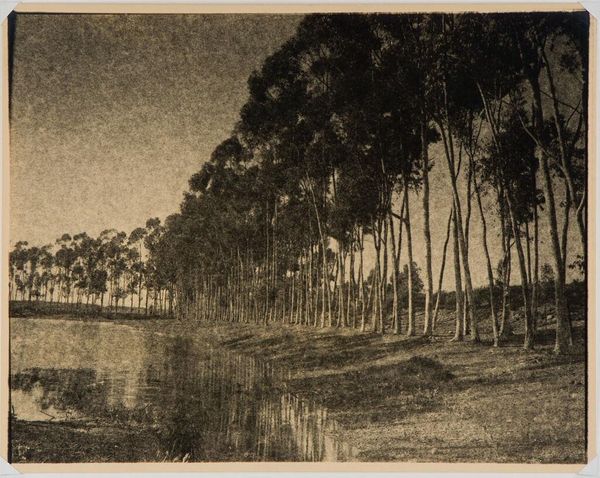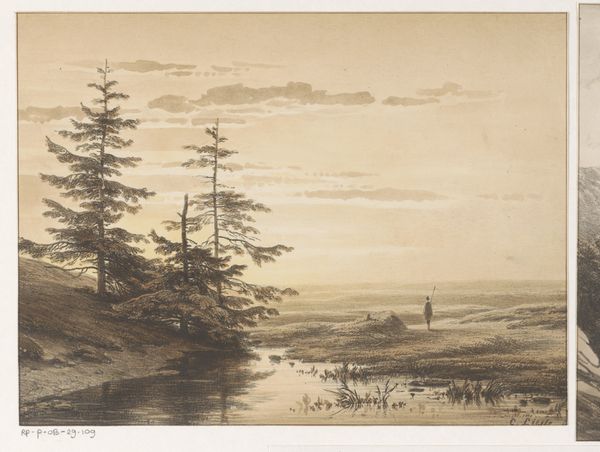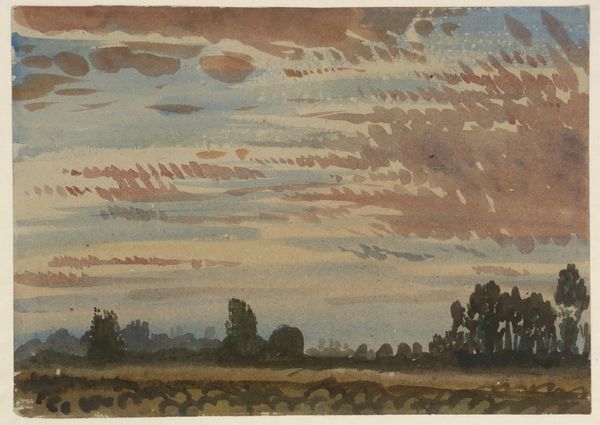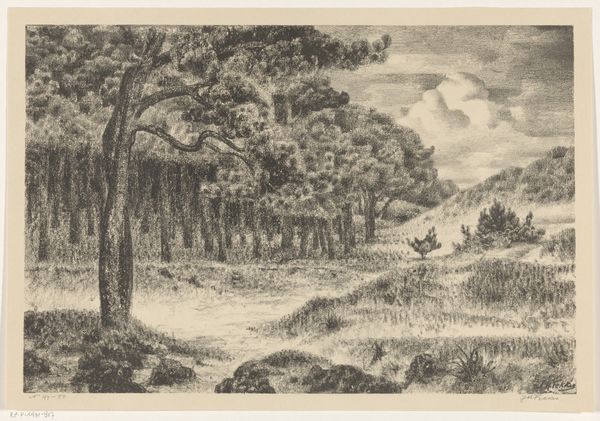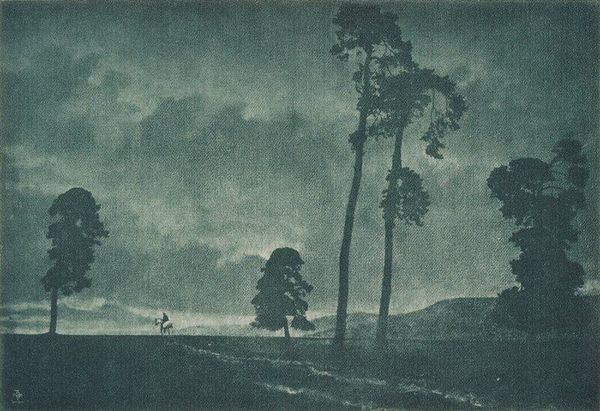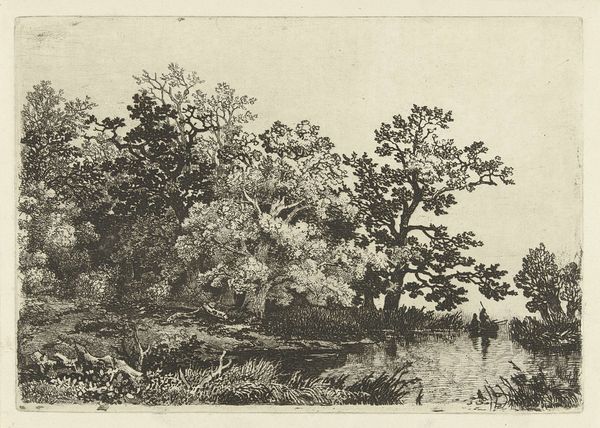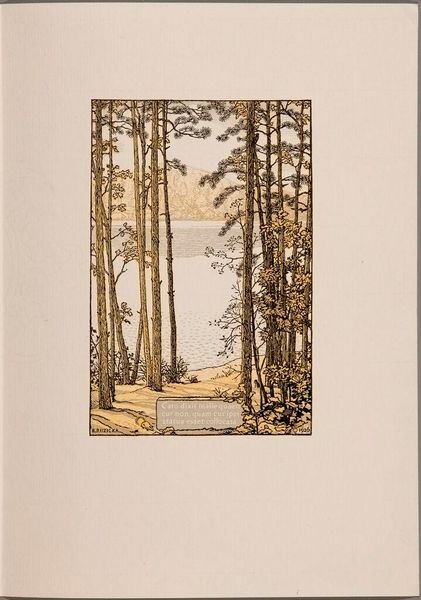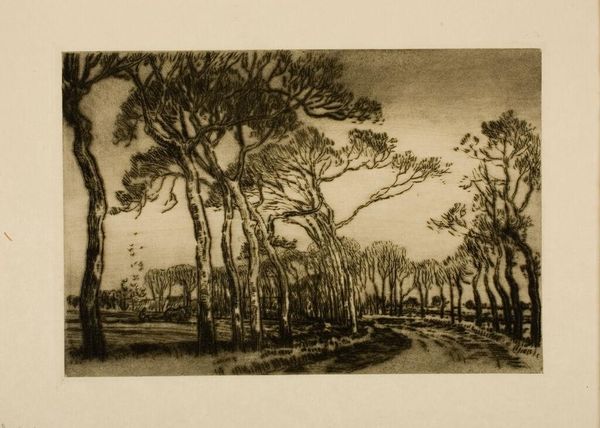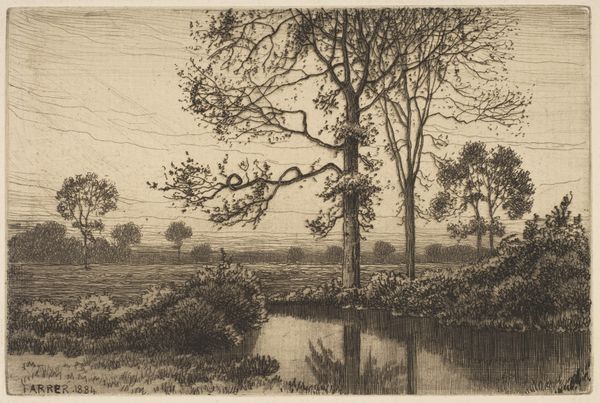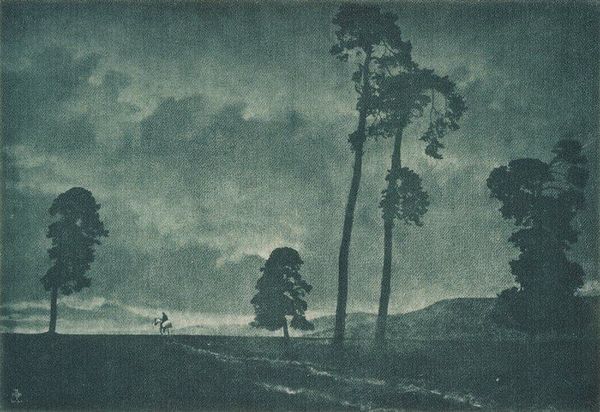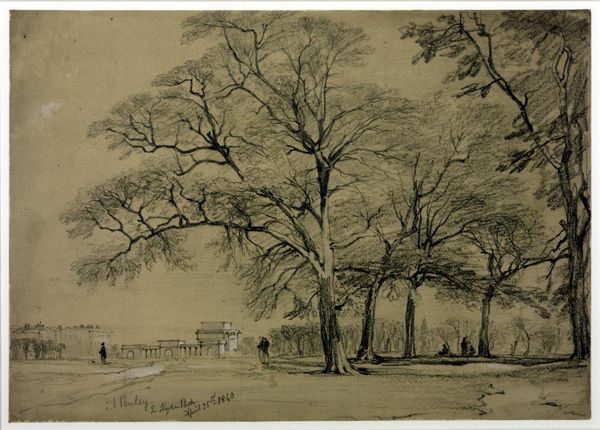
Copyright: Public domain Japan
Editor: This is "Sunset at Ichinokura" by Hasui Kawase, created in 1928 using woodblock print and watercolor techniques. I'm struck by how serene it feels, the way the dark trees contrast against the soft sunset colors in the sky. What catches your eye in terms of its artistic structure and form? Curator: The piece is fascinating because it uses contrasting values—the silhouetted trees against the luminous sky—to create depth and visual interest. Notice how the composition is divided into distinct horizontal layers: the field in the foreground, the dark line of trees, and then the gradated sky. The artist has masterfully structured the planes using line and color, manipulating them to create the atmospheric depth and a sense of space. Editor: So, the placement and the darkness of those trees help to give us that perspective, guiding our eyes, then? Curator: Precisely. Consider the negative space, too—the sky. Kawase uses a very subtle gradation of color; this is important to study because these gradations create a convincing atmosphere. How do you perceive this interplay of dark and light in relation to semiotic theory? Do you find evidence of any signified meaning? Editor: That's an interesting approach. To me, the darkness could signify the end of the day or even suggest a sense of introspection. But in regards to semiotics, if we think of it as an iconic signifier, what meaning do the individual elements -- trees, sun -- take on? Or how do they work together? Curator: It becomes apparent the iconic signifiers--trees, the sun and sky--are deliberately composed in relation to each other, rather than independently. The formal arrangement results in a very controlled expression of beauty in nature. Editor: This discussion has completely altered the way I view the artwork. The conversation around semiotics really illuminated how each element connects, and it is quite beautiful. Curator: I, similarly, find your intuitive connection to the piece encouraging. This constant dialogue between perception and theoretical models expands and improves our ability to analyze formal properties, don't you agree?
Comments
No comments
Be the first to comment and join the conversation on the ultimate creative platform.
